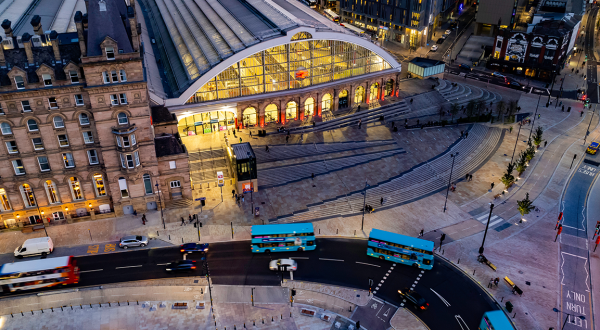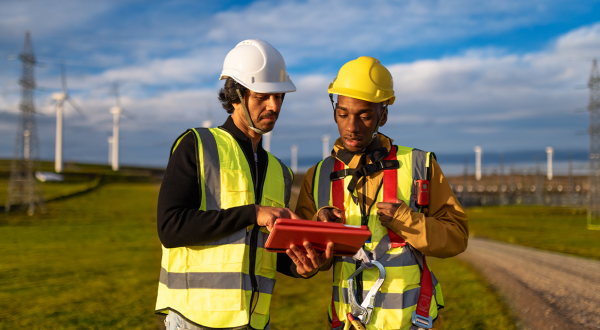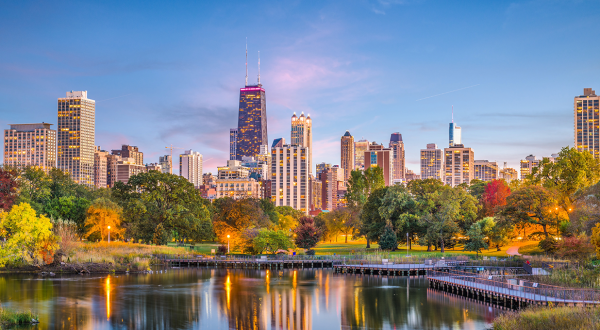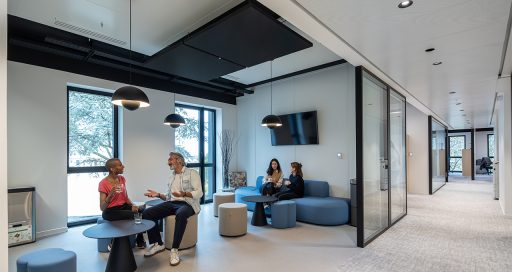Because they are particularly vulnerable to the effects of climate change, buildings and infrastructure make an excellent testing ground for innovation in adaptation strategies. The VINCI Group is equipped with specialist tools to support cities and buildings on their journey toward climate resilience.
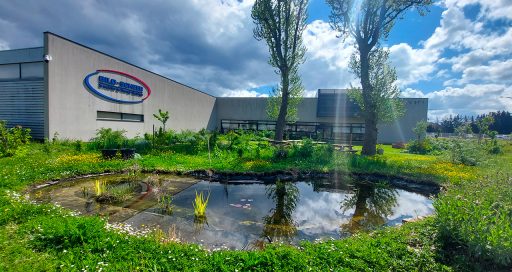
Plus 4 °C by 2100 – this is what countries are preparing for, including France with the third version of the French National Plan for Adaptation to Climate Change (PNACC), with chronic bad weather (rise in average temperature, more frequent droughts, changing rainfall and wind patterns, etc.) increasingly in evidence, accompanied by more intense acute weather events (heatwaves and urban overheating, extreme drought and rainfall, storms, megafires, etc.).
Towns and cities, which by 2050 will be home to more than two-thirds of the world’s population, will play a decisive role in humankind’s ability to adapt to climate risks. At a more granular scale, the built environment and the activities taking place within it will be key to conversations about, and solutions for, resilience.
According to the Institute for Climate Economics (I4CE), the French government spends more than €50 billion a year on infrastructure projects without any systematic assessment of their future climate resilience. “When we talk about buildings, global warming is most often raised under the heading of ‘mitigation’, i.e. the idea of reducing emissions,” says Nicolas Dumas, Environmental Project Manager at VINCI Energies. “But reflecting on ‘resilience’ means thinking in terms of adjustment, i.e. limiting the vulnerability of infrastructure. The two approaches are intertwined but also complementary.”
Consultancy and modelling
Many suitable techniques exist for addressing climate resilience in cities and buildings. Adaptation solutions may be structural, when applied to buildings, or functional and organisational when concerned with users and their activities. Nature-based solutions are increasingly highly sought-after (see box).
Prioritising solutions according to the expected impacts of climate change is a key mission for the design office Resallience, formed within the VINCI Group in 2019.
“Reflecting on ‘resilience’ means thinking in terms of adjustment”
Dedicated to adapting projects, cities, regions, infrastructure and their use to climate change, Resallience is a multidisciplinary team of engineers, geographers, climatologists, economists, data scientists, lawyers, architects and city planners, all experts in the field of resilience to climate change.
As Didier Soto, Climate Change Adaptation Project Manager at Resallience explains, “We offer our customers consulting and digital services relating to climate risk, in particular where it concerns local infrastructure. We perform pre-diagnostic and diagnostic testing, model future climate risks, and help with the development of customised action plans.”
The consultancy, which has worked on around a hundred projects in France and more than 60 other countries, also developed ResiLens, an internal pre-diagnostic tool for the VINCI Group, which performs an initial assessment of infrastructure vulnerability to some 15 climate risks, based on Intergovernmental Panel on Climate Change (IPCC) data. A hundred people have already been trained to use this tool, with the aim of accelerating the wider dissemination of resilience solutions. Its users include the teams at VINCI Facilities Alsace, with their ACDC solution (see section below).
There is now no doubt that the longer we wait to act on climate risk, the harder the work will be.
Nature-based solutions at VINCI Facilities Alsace
One of a number of users of the VINCI Group’s ResiLens mapping tool, VINCI Facilities Alsace has spent four years creating and developing a showcase for adjusting to climate change on its own site. The aim was to allow the firm’s customers to respond to existing and future government-issued adaptation plans while limiting the risks of interruption to their operations.
“Our solution is called ACDC and helps our customers adapt their fixed assets to the effects of climate change using a combination of technical and nature-based solutions (NbS),” says Noémie Fitterer, Environment and Low Carbon Manager at VINCI Facilities Alsace.
The solution developed by the team at VINCI Facilities Alsace begins with an analysis of a building’s vulnerability using the ResiLens tool, which is used to put together a participative design and implementation approach based on the most appropriate actions and methods.
In order to validate and model a solution suitable for rollout to its customers, they initiated testing on the site of their own headquarters. The experiment occupied 2,000 sq. metres and took two years to complete.
The project includes an edible forest garden, nesting boxes and other shelter for animals, a porous parking surface, optimised use of rainwater, planted facades, rooftops with albedo-effect coating, and solar shade canopies. “Everything is measured,” says Noémie Fitterer. “This initiative should allow us to avoid 1.392 tonnes CO2 equivalent in the first year and 1.012 tonnes a year in subsequent years.”
The testing was conclusive, and based on its results, VINCI Facilities Alsace developed a modular service solution, which has already been implemented for one of its customers.
Natural solutions and technical solutions
When it comes to climate resilience, it is worth distinguishing between nature-based approaches and technical solutions. The former, generally referred to as “nature-based solutions (NbS)” and defined by the International Union for Conservation of Nature (IUCN), draw upon nature and its multiple services. They make use of, or are inspired by, wild environments or phenomena: urban marshland, orchards, plant propagation zones, extensive vegetation, rainwater storage, plant walls, ponds, edible forest gardens, rain gardens, porous ground coverings, etc.
Technical solutions are developed through human engineering prowess: renewable energies, reversible heat pumps, shade sails, water and energy management, solar panel shade canopies for fleets of electric bicycles, high-albedo roof coverings, electric vehicle charging stations, etc.
09/12/2024
